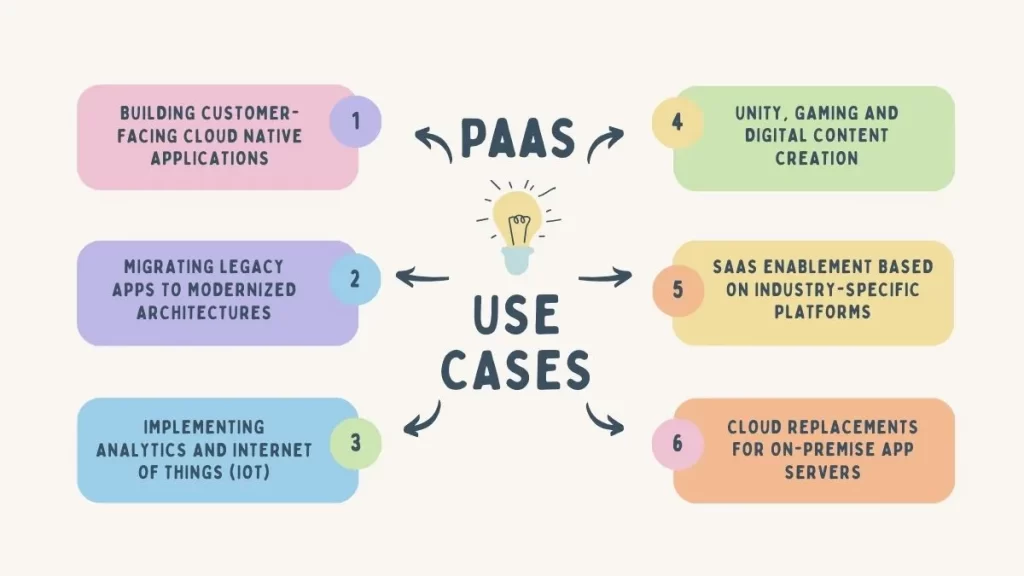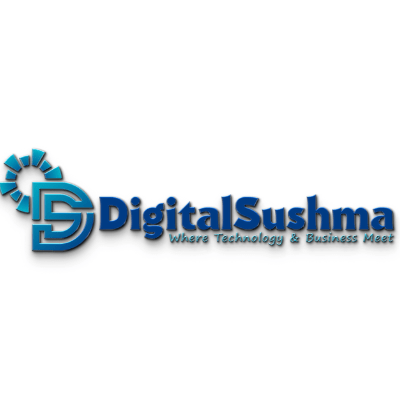Platform-as-a-Service (PaaS) empowers developers to focus on coding applications without infrastructural distractions. Leading PaaS offerings include preconfigured cloud environments for streamlined coding, testing, deploying and managing mobile or web apps. Major benefits of leveraging PaaS include increased productivity, faster time to market, built-in scalability and more.
Common use cases driving PaaS adoption include:

With the PaaS market projected to grow over 15% annually, developer choice is expanding rapidly. This guide examines crucial selection criteria.
Key Differences Between Leading PaaS Providers
While public cloud vendors like Amazon Web Services (AWS), Microsoft Azure and Google Cloud Platform (GCP) dominated initial PaaS adoption, specialty platforms from companies like Salesforce, Mendix and OutSystems now lead in ease of use for non-technical citizen developers. Open source platforms like Red Hat OpenShift and Cloud Foundry provide flexibility for customization compared to proprietary PaaS alternatives.
AWS Elastic Beanstalk
AWSBeanstalk simplifies deploying and scaling web apps and services developed with Java, .NET, PHP, Node.js, Python, Ruby, Go, and Docker. It offers health monitoring and auto-scaling based on demand. Integrates natively with other AWS services.
Microsoft Azure App Service
Azure App Service allows building web and mobile apps that scale automatically on managed VMs. Supports Windows and Linux with .NET, .NET Core, Java, Ruby, Node.js, PHP or Python. Includes DevOps toolchains.
Google App Engine
Google App Engine autocales based on demand and offers built-in services like NoSQL, memcache, traffic splitting and versioning. Supported languages include Node.js, Python, Java, Ruby, C#, Go, PHP and .NET.
Red Hat OpenShift
Red Hat OpenShift helps enterprise developers deploy applications in nearly any environment on premise or across major public clouds. It offers maximum portability through consistent Docker and Kubernetes foundation.
OutSystems
OutSystems provides accelerated cloud app delivery leveraging AI-assisted workflows. It abstracts infrastructure complexities enabling stakeholders to collab on mobile/web apps. Tight Salesforce integration.
Mendix
Mendix offers intuitive visual app modelling to abstract complexities for citizen developers. Automates provisioning, deployment and app lifecycle management across public or private clouds.
Also Read: A Comprehensive Guide to PaaS, SaaS, IaaS, and CaaS Cloud Computing Models
Technical Factors to Consider in PaaS Selection
Evaluating technical capabilities ensures the PaaS environment meets current app requirements with room for future innovation.
Programming Language and Framework Support
Review all coding languages and frameworks that prospect PaaS platforms officially support whether JavaScript, TypeScript, .NET, Java, Python, PHP, Ruby, Go etc. Open source options offer more flexibility.
Application Architecture Patterns
Determine if PaaS enables desired app architecture – whether traditional n-tier, event-driven microservices, container-based, serverless etc. Ensure seamless scalability for fluctuating workloads.
Scalability Requirements
Analyze auto-scaling needs – horizontal, vertical or both simultaneously. Seek timeframes and mechanisms for scaling instances, databases and storage seamlessly without custom coding.
Integrated Cloud Services
Beyond core container orchestration and developer tools, many PaaS platforms offer added databases, analytics, ML capabilities etc. Evaluate which built-in backend services accelerate delivery.
Also Read: The Complete Guide to Funding Your SaaS Startup: Strategies and Best Practices
Evaluating the PaaS Environment
Analyzing the end-to-end developer experience highlights strengths and weaknesses in existing workflows to improve engineering efficiency.
Development Workflow Customization
Review options for personalizing and extending programming workflows – whether custom commands, plugins, editors, automation or interfaces.
Debugging and Troubleshooting
Testing tools and telemetry bi-directionality determines troubleshooting agility. Can developers simulate edge cases and inject faults easily? What data exploration is allowed in production environments?
CI/CD and Deployment Options
Examine whether environments for dev, test, staging and prod are included or require add-ons? Evaluate collaboration capabilities to simplify code reviews, pull requests and Product Owner approvals while accelerating release velocity.
Monitoring, Analytics and Billing
Compare depth of runtime metrics formemory, network, storage, errors etc. Seek visualization dashboards that provide application usage insights without needing data science experts. Ensure billing graphs align costs directly to clusters, resources and usage types for accountability.
Also Read: The Complete Guide to SaaS Inbound Marketing: How to Drive Leads and Sales
Assessing the Ideal PaaS Management Experience
Beyond developer priorities, evaluating operations, security and support competencies ensures alignment with enterprise standards.
Administration Controls
Review access tiers for developers, admins and execs. Do Ops teams have infrastructure control or is the platform blackboxed? How granular can resource allotments, quotas and permissions get?
Identity & Access Management
Examine the IAM models across workforce identities, customer accounts and connected third party apps or devices. Can session policies adapt based on context? How is privileged access granted and revoked?
Customer Support Competency
Compare availability of email assistance, community forums, ticketing systems, chat support and phone contacts when resolving technical questions that inevitably emerge. Are there advisory professional services beyond standard offerings?
SLAs for Performance, Scalability & Uptime
Service contracts detailing uptime reliability, scaling commitments and managed services responsiveness provides accountability should issues ever arise in business critical apps. Scrutinize compensation policies for outages or breach scenarios.
Also Read: The Essential SaaS Marketing Playbook: 12 Proven Strategies
Total Cost of Ownership Comparison
Balancing feature requirements against budget ensures cost-effective choices aligned with the organization’s cloud strategy.
Subscription, Licensing and Usage Charges
Accounting for all recurring platform access fees, support costs, testing environments and incremental usage charges based on traffic or storage provides complete TCO visibility. Seek deals that maximize value.
Cost Optimizing Best Practices
Right size workloads across regions leveraging auto-scaling and resource hibernation during low traffic periods. Deploy apps natively utilizing services in a provider’s ecosystem to minimize egress and transactions fees.
Questions to Ask PaaS Vendors
Clarifying specifics from providers yields insights beyond marketing collateral into track records and future directions.
Security & Compliance Track Record
Ask how platforms safeguard infrastructure, app traffic, credentials and data stores. Review audit histories demonstrating compliances with regional regulations like GDPR, HIPAA etc. as relevant based on app sensitivities.
Roadmap for Enhancements
Understand expected platform developments on next gen coding languages, paradigm shifts like Web 3.0 support, improved collaboration tools and expanded backend capabilities.
Developer Community Engagement
Gauge the ecosystem vitality through metrics like active contributors to documentation or open source tooling as well as integrations published. Developer events also foster hands-on upskilling.
Technology & Consulting Partners
Review partner network breadth across ISVs, resellers, systems integrators, managed service providers and cloud consultancies for accelerated delivery and value realization.
The Most Popular and Widely Used PaaS Solutions:
AWS Elastic Beanstalk – A popular PaaS from Amazon Web Services that supports deploying and scaling web applications in various languages.
Heroku – A cloud PaaS that enables developers to build, run and operate applications entirely in the cloud. Supports Ruby, Java, Node.js, Scala, Clojure, Python, PHP, and Go.
Microsoft Azure – Azure App Service allows building web and mobile apps that scale automatically on a managed virtual machine infrastructure. Supports .NET, .NET Core, Node.js, Java, Ruby, PHP and Python.
Google App Engine – A PaaS that allows building scalable web and mobile backends in various languages including Go, Java, PHP and Python. Offers auto-scaling capabilities.
Red Hat OpenShift – An open source container application platform based on Kubernetes and Docker for deploying and managing containerized workloads across infrastructure.
Engine Yard – A PaaS platform specialized for Ruby on Rails applications. Provides management and auto-scaling capabilities.
Oracle Cloud – Oracle offers robust PaaS options as part of their Oracle Cloud Infrastructure platform including container engine, functions and API management.
IBM Cloud – IBM Cloud Foundry supports containers, serverless, microservices and cloud-native development. Provides integration with Watson services.
Salesforce Platform – Salesforce’s Force.com platform allows creating and deploying cloud apps that leverage Salesforce’s APIs and services through declarative programming.
Mendix – A low-code platform enabling rapid delivery of enterprise web and mobile applications using a visual, model driven approach.
Also Read: How to Choose the Best SaaS Marketing Agency for Your Business Growth
Best Practices for PaaS Selection
Modern developers enjoy great latitude selecting cloud-based platforms tailored for app development velocity, productivity and innovation. Clarifying must-have technical requirements and wishlist capabilities ensures enduring alignment as ecosystems and roadmaps mature over multi-year initiatives. Consider locking discounted multi-year contracts given substantial cost of change. Leverage free tiers for proof-of-concept validation testing various platforms across priority app development lifecycle phases before fully committing.
FAQs on choosing a PaaS platform:
Q1. Which PaaS to use for building web/mobile apps?
A1. There are a few great options for cloud-native app development. Top options like AWS Elastic Beanstalk, Google App Engine and Azure App Service make it easy to build and automatically scale web/mobile apps. Each supports popular languages like JavaScript, Python, Java, .NET. Evaluate options based on language support, built-in services integration and workflow customization flexibility.
Q2. What contributes most to PaaS total cost?
A2. Leading cost drivers are subscription licensing fees plus usage charges for extra storage, bandwidth and instances during traffic spikes or scale-outs. Carefully estimating growth lowers TCO.
Q3. How can I evaluate PaaS security & compliance?
A3. Check provider offerings like encryption, data backups, access controls. Confirm compliance with regulations like HIPAA based on your app data types. Audit histories validate security effectiveness.
Conclusion
Evaluating PaaS solutions spanning proprietary suites from AWS, Azure and GCP to open source Kubernetes-based offerings as well as low-code leaders requires balancing multilayer considerations. Getting hands-on by building sample apps on shortlisted platforms best indicates which option feels the most intuitive day-to-day while also scalable for future needs. Consider blending the strengths of available providers across targeted workloads in a hybrid model. As organizations accelerate cloud migrations, infusing consistency across pre-integrated PaaS environments enhances developer experience and operational efficiencies essential for competing using software innovation.






